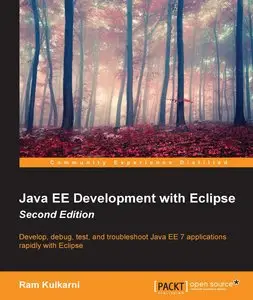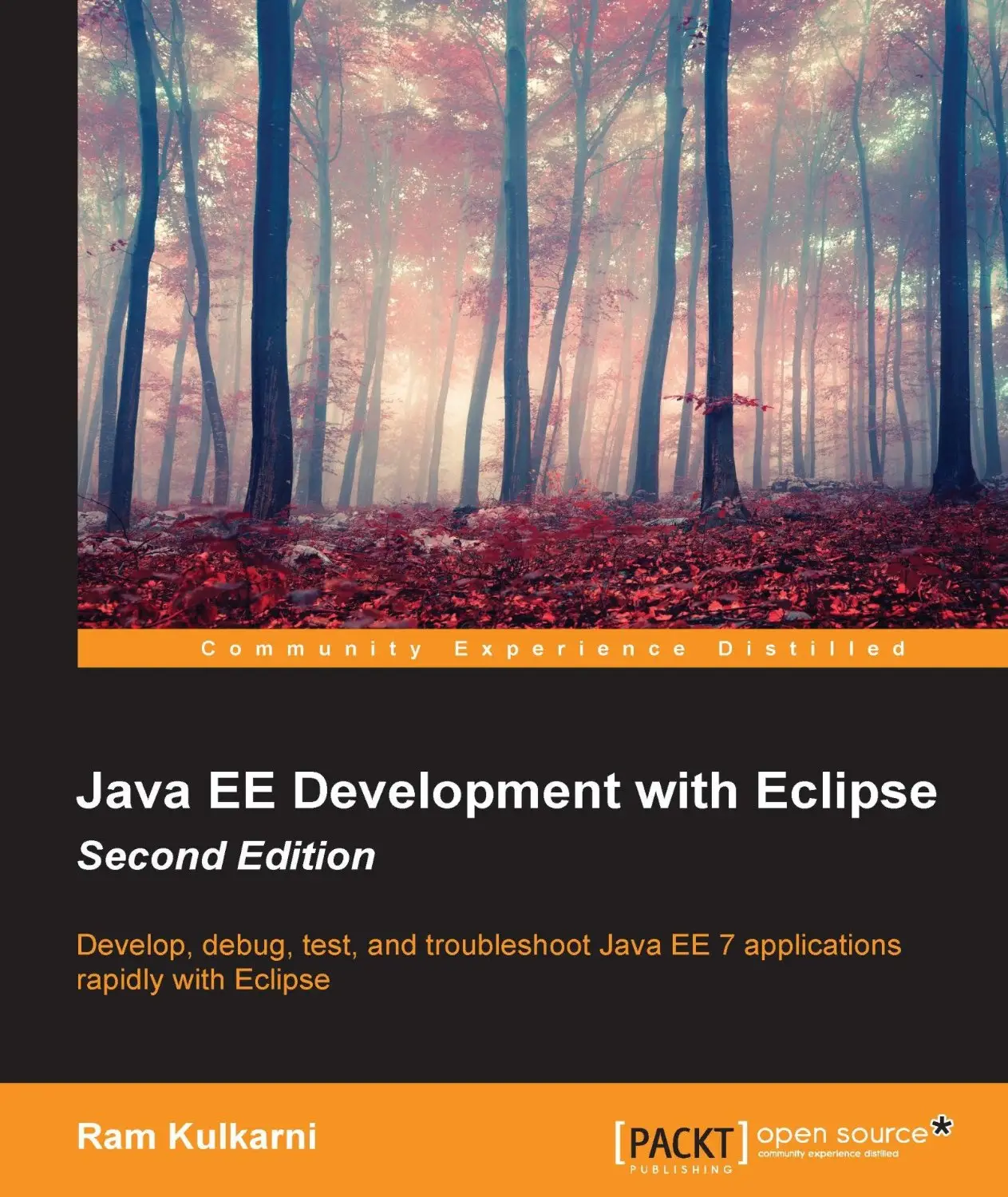Java EE Development with Eclipse - Second Edition by Ram Kulkarni
English | 29 Sept. 2015 | ISBN: 1785285343 | 444 Pages | True AZW3 (Kindle)/(EPUB/PDF conv) | 52.09 MB
English | 29 Sept. 2015 | ISBN: 1785285343 | 444 Pages | True AZW3 (Kindle)/(EPUB/PDF conv) | 52.09 MB
If you are a Java developer who has little or no experience in JEE application development or you have experience in JEE technology but are looking for tips to simplify and accelerate your development process, then this book is for you.
Develop, debug, test, and troubleshoot Java EE 7 applications rapidly with Eclipse
About This Book
Go beyond simply learning Java EE APIs and explore the complete workflow of developing enterprise Java applications
Learn to use the features of Eclipse JEE to simplify Java EE application development
Develop and deploy complete applications with JEE
What You Will Learn
Set up Eclipse, Tomcat, and Glassfish server for JEE application development
Use JSP, Servlet, JSF, and EJBs to create a user interface and write business logic
Create JEE database applications using JDBC and JPA
Handle asynchronous messages using MDBs for better scalability
Deploy and debug JEE applications and create SOAP and REST web services
Write unit tests and calculate code coverage
Troubleshoot application performance and memory issues
In Detail
Java EE is a technology for developing enterprise class, scalable applications. With recent changes to Java EE specifications, JEE application development has become a lot simpler. However, recent changes have also added many new specifications, some of which compete with existing JEE specification. Along with JEE specifications and APIs, it is also very important to understand the entire application development process and tools that can help simplify and accelerate JEE application development.
This guide provides a complete overview of developing JEE applications using Eclipse. The many features of the Eclipse IDE are explained. These enable the rapid development, debugging, testing, and deployment of JEE applications. You'll explore not just different JEE technologies and how to use them (JSP, JSF, JPA, JDBC, EJB, web services etc.), but also suitable technologies for different scenarios.
The book starts with how to set up the development environment for JEE applications and then goes on to describe many JEE specifications in detail, with an emphasis on examples. You'll learn how to deploy an example application on Tomcat and Glassfish Application Server.
You'll create a simple application that reads from a queue, processes the request, and publishes results to a topic and Eclipse MAT (Memory Analysis Tool) to debug memory issues.
Style and approach
This guide takes a step-by-step approach to developing, testing, debugging, and troubleshooting JEE applications, complete with examples and tips.
Books in these formats look like real PDF, with good pictures and tables!
You can download on your any Kindle devices (Kindle Paperwhite, Kindle Fire HDX, Kindle Voyage, Kindle Keyboard, Kindle Wireless) and then open the eBook to read.
For reading on your PC (Windows XP / Vista / Windows 7 / XP x64 / Vista 64 / Windows7 x64 / Windows 8 / Windows 8 x64) you must register an account on Amazon, after download and install Kindle for PC from Amazon:
ht...-10&keywords=for+PC
If you want read eBooks on your Android device, you can download Kindle for Android from Play Market:
https://play.google.com/store/apps/details?id=com.amazon.kindle
Kindle for Mac you can found and download here:
https://itunes.apple.com/us/app/kindle/id405399194?mt=12
http://www.amazon.com/dp/B00UB...7DG6Q?_encoding=UTF8&psc=1
If you would like reading kindle eBooks on your iPhone or iPad, you need download an Kindle for iOS:
https://itunes.apple.com/md/ap...584613?mt=8&ign-mpt=uo%3D4
You can download on your any Kindle devices (Kindle Paperwhite, Kindle Fire HDX, Kindle Voyage, Kindle Keyboard, Kindle Wireless) and then open the eBook to read.
For reading on your PC (Windows XP / Vista / Windows 7 / XP x64 / Vista 64 / Windows7 x64 / Windows 8 / Windows 8 x64) you must register an account on Amazon, after download and install Kindle for PC from Amazon:
ht...-10&keywords=for+PC
If you want read eBooks on your Android device, you can download Kindle for Android from Play Market:
https://play.google.com/store/apps/details?id=com.amazon.kindle
Kindle for Mac you can found and download here:
https://itunes.apple.com/us/app/kindle/id405399194?mt=12
http://www.amazon.com/dp/B00UB...7DG6Q?_encoding=UTF8&psc=1
If you would like reading kindle eBooks on your iPhone or iPad, you need download an Kindle for iOS:
https://itunes.apple.com/md/ap...584613?mt=8&ign-mpt=uo%3D4



